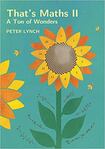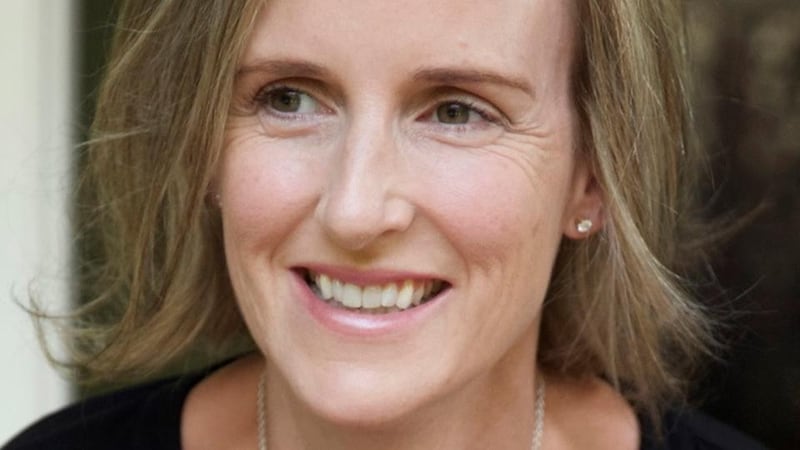
The problem of communicating interesting mathematical material of any depth to the general reader is a very difficult one and Peter Lynch has over the years mastered this problem in his very entertaining That’s Maths column in The Irish Times.
A balance must always be struck between the technical background needed to understand the mathematical content and the desire to entertain and instruct the reader, all within the constraints of scarce newspaper column inches. His first book in this series That’s Maths ( Gill Books, 2016) consisted of more than 100 illustrated essays drawn from all areas of mathematics, including pure mathematics, applied mathematics, statistics, computer science, with biographical material and very entertaining and instructive commentary. These were in many cases expanded and illustrated versions of his Irish Times column.
The book was a commercial success and shows that in this country there is a good market for well-written and interesting material on what is considered the most abstruse of subjects. Lynch’s enthusiasm for mathematics and his very wide-ranging knowledge of the subject show through on every page.
The current volume, That’s Maths II, A Ton of Wonders, beautifully produced by Logic Press, gives us more of the same, and it would be no surprise if further volumes appear in time. Normally, second books on a given topic fall short of the original, not least because the author initially commits his very best material, but in this case the reviewer’s opinion is that the second volume is even better than the first, if only marginally.
Readers who read and enjoyed the first volume will know exactly what to expect, and they will not be disappointed. Not surprisingly, the book covers a very wide range of human knowledge and activity, including literature, history, poetry, voting, astronomy, national security, surveying, turbulence, gambling, poetry, music, tides, meteorology, lateral thinking and biography, showing the huge wealth of the subject sadly denied to many pupils in school and even in college.
This is of course in addition to mathematical topics such as number theory, probability, prime numbers, quaternions, cantor sets, Venn diagrams, logarithms, solutions of equations and infinity, all very clearly written and explained.
Let me choose a few of my personal favourites from the book – though I have been involved in mathematics for more than 60 years, and spent 40 years teaching the subject at third level, I am pleased to report that I learned quite a bit from this book , as I did from the previous volume, and surely no greater tribute is possible.
Lynch approves of lateral thinking in mathematics and so do I; indeed, with Paul Sloane, I have written a book on the subject. The first essay traces the notion back to de Bono in general and to Polya in mathematics and gives a couple of classic examples; one answering the classic problem of how many matches are needed to decide a knockout tournament and another answering the question of a bumblebee of astonishing speed and stamina making its way over and back between two trains, in a couple of lines.
Lateral thinking needs to be taught to our children in school to show them how exciting and satisfying smart thinking can be and to show just how effective it can be in mathematics.
Mathematicians have been intrigued for many centuries by the possibility of finding a formula for generating all of the prime numbers and only these, and Essay 14 of the book discusses this topic in depth. It can be shown that no simple single variable polynomial can do this (though Euler’s famous n^2 - n + 41 does very well) but the author produces an astonishing 25th order polynomial in 26 variables such that every positive value for the positive integer variables is prime, and every prime is so generated. Sadly, many of the values are negative, and each prime can appear many times, so the formula is not effective for generating all of the primes. But the search goes on!
Borges’s Infinite Library ( The Library of Babel 1941) has long been a favourite story of mine and it is the theme of Peter Lynch’s Essay 35 of the book. It can be related to the elementary but profound result that given any finite sequence of positive integers such as 317055892341600928 for example then there is a power of 2 which begins with that sequence! Encoding any piece of literature with A = 10, B = 11, C= 12,… the book becomes a number, and the number is the beginning of a power of 2! This means that everything in the infinite library ever written or ever possible to be written, is already there as the beginning of a power of two. There are snags of course but the very thought is scary.
This book is very good indeed, but no book is perfect. Firstly, it deserves a hardback edition to sit on the shelves with its predecessor. As a pure mathematician, I am a little concerned by the tendency to seek immediate applications for many of the topics. Good mathematics needs no justification and can always stand on its own two feet; applications and uses almost always mysteriously arise, but this is not its justification. As the great Richard Feynman has said: “Mathematics is like sex; it frequently leads to productive results, but this is not why we do it”.
Count Buffon gets away lightly, and there is no mention of the suggestion that he may have cooked the figures a bit when he calculated pi using his famous needle. And Essay 21 on matrix theory and Essay 28 on turbulence were I felt just a bit too technical for a book at this level.
But these are very minor quibbles. The author has written another super book that should be in every school and college library and on the bookshelves of every teacher, engineer, and computer scientist , and all who are interested in mathematics and its many applications and uses.
With these books, Lynch has joined a very select international band of people like WW Sawyer, Martin Gardner, Ian Stewart, David Wells and Marcus du Sautoy, who have succeeded in crossing a great divide.
Professor Des MacHale is emeritus professor of mathematics, University College, Cork














